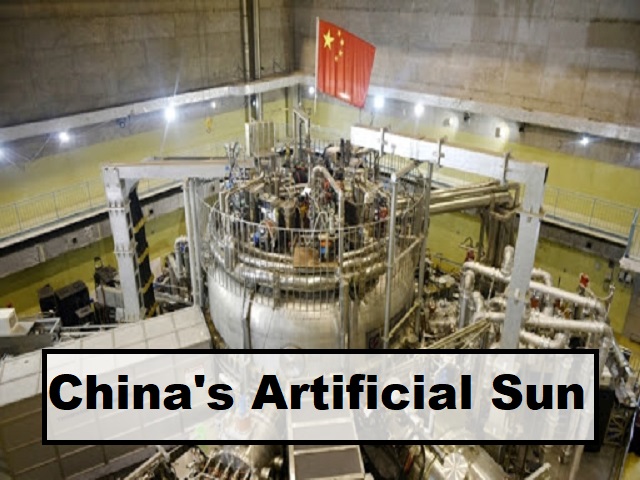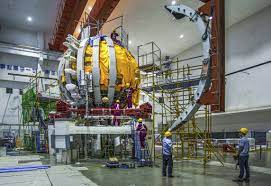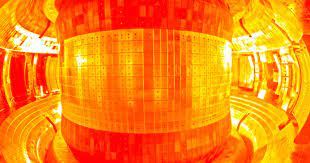China's artificial sun mission refers to the country's efforts to develop and build an experimental nuclear fusion reactor known as the "Experimental Advanced Superconducting Tokamak" (EAST). This project aims to harness the power of nuclear fusion, a process that replicates the energy-producing reactions that occur in the sun and other stars, as a potentially cleaner and more abundant source of energy compared to traditional fossil fuels or current nuclear fission reactors.
EAST is a type of tokamak, a doughnut-shaped magnetic confinement device, which is designed to create and control the conditions necessary for nuclear fusion. The project is based at the Hefei Institutes of Physical Science in Anhui province, China.
China has been making significant investments in fusion research and development, with EAST being a major component of their efforts. The project involves scientists and engineers working to achieve the conditions necessary for sustained nuclear fusion, where hydrogen isotopes fuse together to release vast amounts of energy.
China has achieved several important milestones in its pursuit of nuclear fusion, including achieving high plasma temperatures and sustaining plasma for extended periods of time. The goal is to create and maintain a self-sustaining fusion reaction, also known as "ignition."
China is actively collaborating with other countries and international organizations involved in nuclear fusion research. Fusion projects often involve global cooperation, as the challenges and potential benefits of nuclear fusion are of interest to the international scientific community.
Successful development of nuclear fusion as an energy source could have profound implications for the world's energy supply. Fusion has the potential to provide a nearly limitless and clean source of energy, with minimal radioactive waste and no greenhouse gas emissions.

China's artificial sun, the Experimental Advanced Superconducting Tokamak (EAST), is created on Earth using a magnetic confinement approach known as a tokamak. Here's a brief overview of how it works.
The tokamak is a donut-shaped device that uses strong magnetic fields to confine and control a superheated plasma, which consists of hydrogen isotopes (deuterium and tritium).
Powerful heating systems, such as radiofrequency or neutral beam heating, are used to raise the temperature of the plasma to millions of degrees Celsius. At these extreme temperatures, the hydrogen isotopes in the plasma start to fuse together, releasing energy.
The donut shape of the tokamak, along with the complex arrangement of magnetic coils, helps keep the superheated plasma stable and prevents it from touching the walls of the device.
The goal is to sustain nuclear fusion reactions within the plasma for an extended period, generating a self-sustaining energy source.

The main source of fuel used in China's artificial sun mission, the Experimental Advanced Superconducting Tokamak (EAST), is a combination of hydrogen isotopes, specifically deuterium and tritium. These isotopes are the primary fuel for nuclear fusion experiments in tokamaks and other fusion devices.
Deuterium and tritium are chosen as fusion fuel because they have several advantageous characteristics for controlled nuclear fusion
Deuterium can be extracted from water, and tritium can be produced from lithium. Both of these elements are relatively abundant and can be readily sourced.
Deuterium-tritium (D-T) fusion reactions have a relatively low ignition temperature and release a significant amount of energy when they fuse together. This makes D-T fusion an attractive option for power generation.
Deuterium and tritium can be controlled within the plasma in a tokamak, where they are heated to extremely high temperatures and pressures to initiate and sustain fusion reactions.
Nuclear fusion has the potential to provide a nearly limitless and clean source of energy. It produces energy by fusing hydrogen isotopes, which are abundant and produce minimal radioactive waste. Unlike traditional fossil fuels, fusion doesn't emit greenhouse gases, making it an attractive option for addressing climate change and reducing environmental impacts.
Fusion energy could reduce a country's dependence on fossil fuels and imported energy resources. China, as one of the world's largest energy consumers, is keen on developing energy sources that enhance its energy security and reduce its carbon footprint.
Fusion research involves cutting-edge science and technology, and progress in this field can lead to scientific and engineering breakthroughs in various other areas. It also allows China to demonstrate its scientific and technological capabilities on the global stage.
Successfully developing fusion technology could lead to significant economic opportunities, including the construction and operation of fusion power plants, as well as the export of fusion-related technology and expertise.
As a rapidly industrializing nation, China is also concerned about the environmental impact of traditional energy sources. Developing fusion as a cleaner and more sustainable energy option aligns with their efforts to mitigate pollution and environmental degradation.



You must be logged in to post a comment.